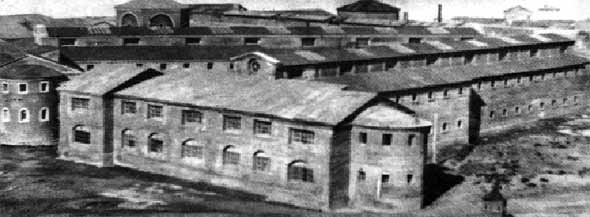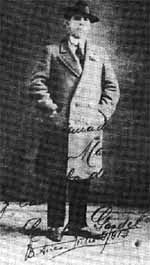|
society it must be noticed that by 1919 Ushuaia had 500 settlers and 550 convicts.
Life conditions in the prison changed over the years. Although the convicts sent to this prison were extremely dangerous and they were under strict surveillance, there were times when the relations between the warden and jailers and the convicts were almost tolerable. The journey from Buenos Aires to the prison was cruel to the prisoners, almost inhuman. They remained in the ship’s hold, in iron chains. They were fed the worst food imaginable and were left without any kind of assistance in their needs. Reaching Ushuaia alive was a relief. In some cases the convicts would strike a friendship or two among the jail keepers and some neighbors. Everything changed during 1931 and 1932. The wardens established a true reign of terror among the prisoners. There were bloody beatings and punishments as well as cruel psychological and physical tortures. |
These was the time of highest jailbreak attempts, which usually ended up in the deaths of the escapees. The neighbors remember seeing the prison train piled with the bodies of those who did not survive the punishments. The situation was so critical it even led to a showdown between the guardians and the Ushuaian police. After two years of hundreds of accusations, there was a court investigation that ended up sentencing the jail authorities and the cruelest guards. The prison’s story is also the story of the prison and the town’s relationship. It is the story in the anecdotes of frustrated escapes, of runaway convicts that returned of their own will a few days later. It is also the chilling story of some of the most dangerous criminals in Argentine history, who sometimes were reformed, and other times ended their lives in dramatic circumstances. The criminals ranged from political prisoners to anarchists, revolutionaries, murderers, con-artists, thieves, illiterates, intellectuals and poets. This prison housed a variety of human behaviors and stereotypes. It also confined the famous Carlos Gardel, when at a young age he served time, which was later reduced due to good behavior. Some even dare say that the convicts in Ushuaia were his first audience. Although there are many speculations on the reasons for his confinement, the truth is that his records disappeared forever, probably through the workings of an admirer. |
The Prison of the End of the World |
|
 Carlos
Gardel o Charles Romuald Gardés.¿Uruguaian or french?
Carlos
Gardel o Charles Romuald Gardés.¿Uruguaian or french?